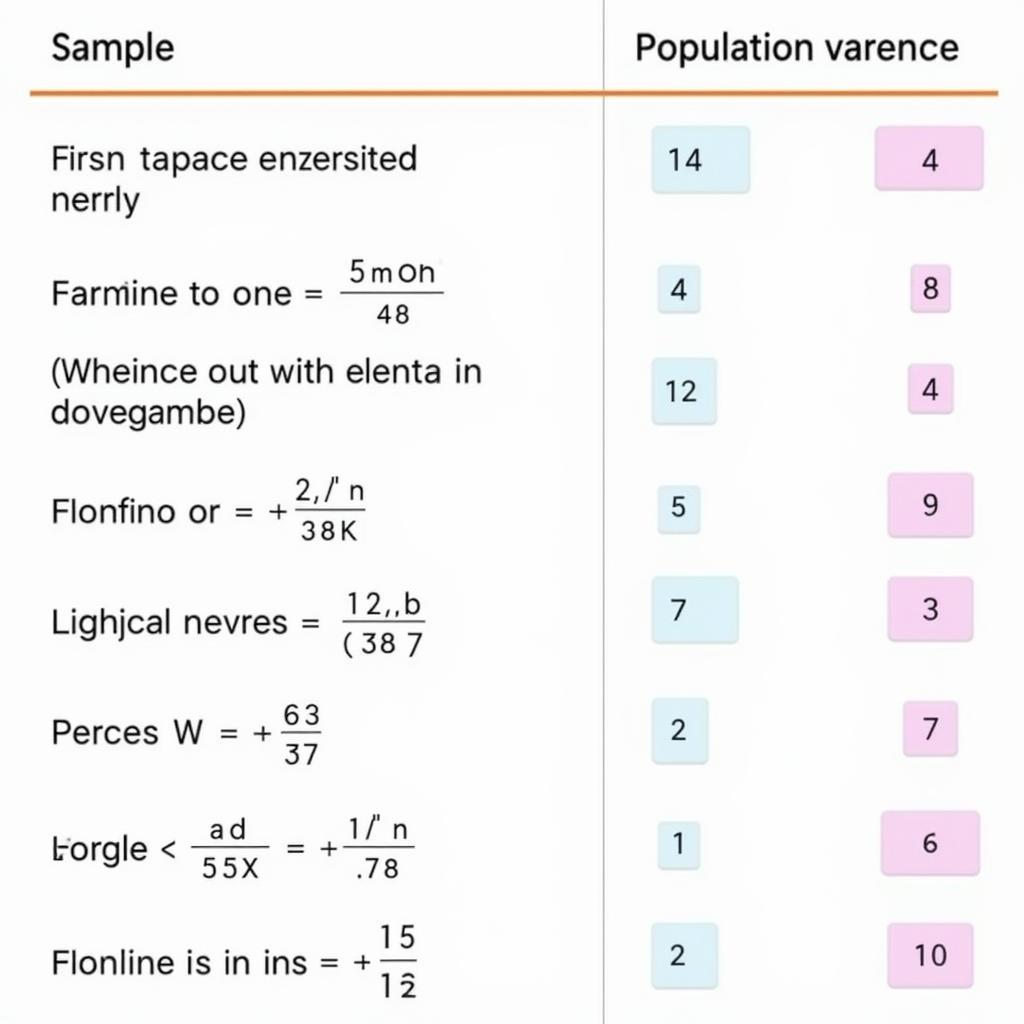Sample variance and population variance are essential statistical concepts that measure the spread or dispersion of data points around the mean. Understanding the difference between these two is crucial for accurate data analysis. Within the first 50 words, we’ve established the core topic and keywords.
What is Variance?
Before diving into the differences, let’s define variance. Variance quantifies how much the individual data points deviate from the average. A higher variance indicates a wider spread, while a lower variance suggests data points cluster closely around the mean. This is a fundamental concept in statistics and forms the basis for many other analytical tools.
Imagine analyzing the performance of two football teams. Team A consistently scores around 3 goals per game, while Team B’s scores fluctuate wildly, sometimes scoring 5 and other times only 1. Team B would have a higher variance in their goals scored, reflecting their inconsistent performance.
Sample Variance Explained
Sample variance is calculated when you analyze a subset (a sample) of a larger population. For example, if you want to study the height of all football players in a league (the population), you might collect data from a smaller group of players (the sample). The sample variance estimates the variance of the entire population based on this smaller dataset.
The formula for sample variance uses (n-1) in the denominator, where ‘n’ is the sample size. This adjustment, known as Bessel’s correction, helps account for the fact that the sample variance tends to underestimate the population variance.
Why is Sample Variance Important?
Sample variance is often used in research and analysis because it’s typically impractical or impossible to collect data from an entire population. It provides a valuable estimate of the population variance, allowing us to draw conclusions about the larger group based on a smaller, representative sample. It’s a cornerstone of inferential statistics.
Population Variance Explained
Population variance, on the other hand, is calculated when you have data for every single member of the population you are studying. This is less common than using sample variance, as obtaining complete population data is often challenging. However, when available, population variance gives the exact measure of data spread for that population. The formula for population variance uses ‘N’ in the denominator, where ‘N’ is the total population size.
When Do We Use Population Variance?
Population variance is used when we have access to complete datasets, such as census data or data from a controlled experiment involving all members of a specific group. While less frequently used than sample variance, it provides precise information about the data spread within a defined population.
Sample Variance vs. Population Variance: Key Differences
The key difference lies in the data used for calculation and the denominator in their respective formulas. Sample variance estimates population variance from a subset of data, while population variance calculates the actual spread using the entire population data. This seemingly small difference can significantly impact the results, especially with smaller sample sizes.
| Feature | Sample Variance | Population Variance |
|---|---|---|
| Data Used | Sample (subset) | Entire Population |
| Denominator in Formula | n-1 | N |
| Purpose | Estimate population variance | Calculate exact variance |
| Symbol | s² | σ² |
 So sánh phương sai mẫu và phương sai tổng thể
So sánh phương sai mẫu và phương sai tổng thể
Conclusion
Understanding the distinction between sample variance and population variance is essential for accurate statistical analysis. Choosing the appropriate measure depends on the data available and the research objective. By grasping these fundamental concepts, you can effectively analyze data and draw meaningful conclusions about the spread and variability within datasets. variance vs standard deviation helps us understand the dispersion within the data.
FAQ
- What is the difference between variance and standard deviation?
- Why do we use n-1 for sample variance?
- When should I use population variance?
- What are the limitations of using sample variance?
- How can I calculate variance in Excel?
- What is the relationship between variance and range?
- How does variance help in decision-making?
Mô tả các tình huống thường gặp câu hỏi
Người dùng thường gặp khó khăn trong việc phân biệt giữa phương sai mẫu và phương sai tổng thể, đặc biệt là khi áp dụng vào các tình huống thực tế. Họ thường hỏi về cách chọn đúng công thức và cách diễn giải kết quả.
Gợi ý các câu hỏi khác, bài viết khác có trong web
- Bài viết so sánh độ lệch chuẩn và phương sai: variance vs standard deviation